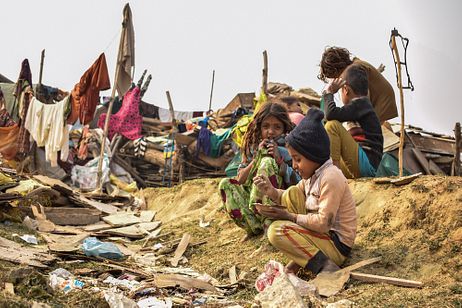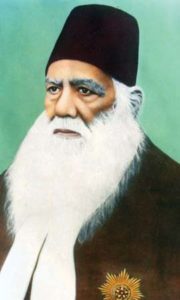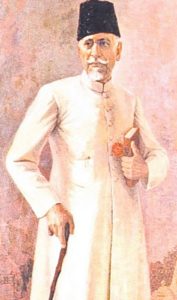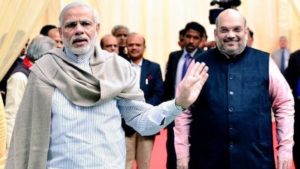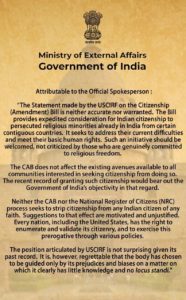
When the ancient Cro-Magnon crossed paths with the Neanderthal in prehistoric Europe, a conflict was born. Slowly but surely, the invading Cro-Magnons subdued and supplanted the native Neanderthals into oblivion. The only Neanderthal traces left were fossils and tiny genetic snippets in the Sapiens code. But why did these Cro-Magnons so rapidly succeed the Neanderthals?
Yuval Noah Harari proposes the power of myth.
Origins
In his book Sapiens, Harari posits that it was the ability of ancient humans to create myths that led to triumph over their Neanderthal cousins. Whether it was concepts of religion, trade, country, etc…, the Cro-Magnon coalitions weren’t just strengthened by shared genetic codes but shared mythic creeds. Innovation and legends built from this cognitive revolution gave early humans the tools to not only conquer other species but also each other.
Old myths were now carving new realities.

This blood of fratricide would continue across the ages to the tip of Spartan spears clashing against Athenian shields. In this land of early contacts, people who shared even greater similarities than the Cro-Magnons and Neanderthals were still locked in an eternal war over the myths of alliances and city states. Another incarnation would appear in the same land as Greeks and Anatolian “Turks” (who may have shared more DNA with an Athenian than a Central Asian) would come to gunpowder blows with a backdrop of whether Jesus or Muhammed was the supreme prophet.
Of course, one could say these conflicts were all over resources; but myths provided the fuel to the fire. The fictions of community, ideology, and religion were integral to these conflicts; and the legends of their conflicts were peppered with these myths, not over who controlled a salt mine.
The Deviant
History is filled with centralized powers and rulers having a vice grip over their societies’ myths. Nonetheless, massive calamities or upheavals would cause realities to shatter mythologies (much like the coronavirus today). The spread of the internet and social media have upended traditional formulas, and now myths are increasingly divided and divisive.
I came across an extremely interesting yet at times very hypocritical podcast – the Rabbit Hole. It is produced by the New York Times and delves into the story of a young man named Caleb and his radicalization by way of…YouTube. On the way it pairs a fairly centrist Joe Rogan with famous racists such as Stephan Molyneaux and Milo Yiannopolous, designates deviation from mainstream thought as a mental disturbance, and labels dissent against mainstream media as surefire pathway to bigotry.

It is slickly produced, gorgeous in audio, and loudly ironic – as it sounds like a parody of propaganda itself.
Let’s not forget the highlight reel of the New York Times’ myths this year includes lamenting that not enough Indians have died due to coronavirus, labeling the Chinese travel ban as racist, and canceling #MeToo because Joe Biden.
These are the myths that an esteemed and storied American institution propagates. It doesn’t take a mythologist or scientist to tell you that something is off.
Media, academia, corporations, and governments themselves are seeing their stories thrown into bonfires like an Evangelical reaction to Harry Potter books. The sacred myths of the past such as the accessibility of the American Dream, the “natural fit” of the European Union, the hyper-competence of the CCP, India’s minority favoritism in guise of “secularism,” and so many more myths of the elites are being capsized. Populist surges have been inflamed by mismatching of reality and myth, and alternative voices have been given suffrage by the internet.
The Rabbit Hole feels like a reaction. A major institution trying to silence alternative thought (much of which I strongly disagree with myself) as it feels threatened, using every aesthetic and influential trick in its repertoire. It’s a very entertaining yet at times jarring piece of content. It’s so fascinating seeing a media giant so brazenly and fearfully enforce its myth.
Māyā, the Illusion
The Hindu concept of Māyā is multifaceted; but for our purpose today, let’s pin it down to the idea that our world is an elaborate illusion, fueled by attachment, arrogance, and deception. The illusion is tailored. For one, it may be their emotional faults; for another, it’s their addiction; for someone else, it’s their position of power, etc…
Each person has their own māyā. Their own reality. Their own myth.
Institutions have for too long utilized prestige to create precedent. They have gotten used to their word being a given, rather than something that is taken. Now with the coronavirus baring the top-down māyā of the elites and institutions, a bottom-up backlash ensues.
A whole array of new myths and challenges to the status quo are arising. Many of my group chat debates with friends end up being us posting different articles that say wildly opposite conclusions with Herculean confidence – a testament to how we now have a myriad of myths to choose from yet increasing difficulty in discerning our reality. News is no longer news. News is narrative.
Truth is more subjective than ever.
Think Different
The Vedas have described reality as “neti neti” – not this, not that. This comfort with ambiguity is something that is sorely missed in today’s world. The sages who composed the Vedas found ease in ambiguity and accepted the limits of truth. From their verses, flowed the founding myths of the Indian subcontinent; and subsequent philosophers and truth-seekers created their own spin on those myths. Debate, diversity, and a mutual respect became integral to the Indic ethos, something you would never assume today watching the screaming cobblestone screens of Indian news.

Now is a time to embrace ambiguity. Absolute truths are being overturned by the coronavirus and the cascading economic downturn. From the Federal Reserve’s infinite monetary sprint careening past notions of debt to the WHO’s blatant capitulation to the Dragon, old conventions are imploding to open a path for new strategies, new myths.
This piece is more of a collection of thoughts than a focused message. A quiver of arrows rather than a spear. I want you to leave with questions.
Why should I listen to the media and institutions that have been so consistently wrong? That have a permanent sneer towards me? That seek to sear any speck of debate into ashes?
The war over myths is the story of human progress. Our myths chart the trail of our future. Belief has proven self-fulfilling on an individual as well as societal level. We must make sure that our beliefs are not defined by consistently wrong and Puritanical elites and institutions.
Our myths should come from experience and inquiry. It’s time for conversion. It’s time for reincarnation. It’s time to choose our own mythology.




